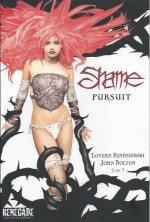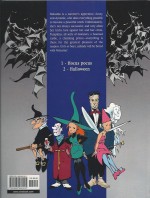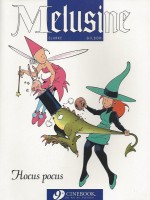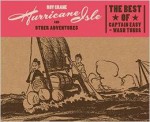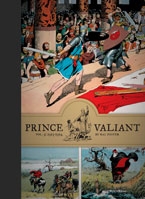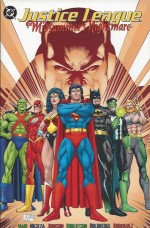

By Jerry Siegel, Joe Shuster, Don Cameron, Bill Finger, Alvin Schwartz, Whitney Ellsworth, Ed Dobrotka, Sam Citron, Ira Yarbrough, George Roussos, Jack Burnley, Wayne Boring & various (DC Comics)
ISBN: 978-1-4012-2885-9
Today’s American comicbook industry – if it still existed at all – would have been utterly unrecognisable to us without Superman. His unprecedented invention and adoption by a desperate and joy-starved generation quite literally gave birth to a genre if not an actual art form.
Spawning an impossible army of imitators and variations, within three years of his 1938 debut, the intoxicating blend of eye-popping action and social wish-fulfilment which hallmarked the early Man of Steel had grown to encompass cops-and-robbers crime-busting, socially reforming dramas, science fiction, fantasy, whimsical comedy and, once the war in Europe and the East embroiled America, patriotic relevance for a host of gods, heroes and monsters, all dedicated to profit through exuberant, eye-popping excess and explosive derring-do.
In comicbook terms at least Superman was master of the world, having already utterly changed the shape of the fledgling industry. There was the phenomenally popular newspaper strip, a thrice-weekly radio serial, games, toys, as much global syndication as the war would allow and the perennially re-run Fleischer studio’s astounding animated cartoons.
Despite all the years that have passed since then, I – and so many others – still believe that superhero comics were never more apt or effective than when they were whole-heartedly combating the agents of Fascism (and yes by heck, even the dirty, doggone, Reds-Under-the-Beds Commies, who took their place in the 1960s too!) with mysterious masked marvel men in compulsive, improbable short, sharp exploits,
The most evocative and breathtaking moments of the genre always seem to occur as those gaudy gladiators soundly thrashed – and please forgive the offensive contemporary colloquialism – “Nips, Nazis and Redsâ€. However, even in those dark days long-ago, the young and enthusiastic creators were wise enough to augment their tales of espionage and invasion with a range of gentler, more whimsical four-colour fare. By the time of the sagas in this superb seventh Superman full-colour hardcover Archive edition – re-presenting #30-35 (September/October 1944 to July/August 1944) of the Man of Tomorrow’s solo title – the apprehension of the early war years had been replaced with eager anticipation as tyranny’s infernal forces were being rolled back on every Front.
Superman was the premier, vibrant, vital role model whose startling abilities and take-charge, can-do attitude had won the hearts of the public at home and the troops across the war-torn world.
Now, although the shooting was all but over, stirring, morale-boosting covers and stories were being phased out in favour of gentler and even purely comedic themes.
Following a funny and informative Foreword: “Look! Up in the Sky! It’s a Bird… it’s a Plane…it’s – An Imp?’ by cartoonist Evan Dorkin discussing the advent of super-foes, social change and a certain fifth dimensional jester, the action-laced whimsy begins with ‘Superman Alias Superman!’ by Don Cameron, Ira Yarbrough & Stan Kaye wherein lovelorn Clark Kent takes romantic advice from office-boy Jimmy Olsen and impersonates his own alter ego to impress Lois.
The doomed imposture is further complicated because his scathing, scoop-obsessed colleague is fully fixated on catching high society bandit Silver Foxx and has no time for Clark’s insecurities and idiocies…
The go-getting journalist was always too busy for romance back then, as can be seen in ‘Lois Lane, Girl Reporter: The Arch-Swindler’ by Cameron, Ed Dobrotka & George Roussos. In those turbulent times the interpretation of the “plucky news-hen†was far less demeaning than the post-war sneaky minx who was so popular in the late 1950s and 1960s.
Lois might have been ambitious and life-threateningly precipitate, but it was always to advance her own career, help underdogs and put bad guys away, not trap a man into marriage.
Her Superman-free exploits began in #28: a succession of 4-page vignettes offering breathless, fast-paced, screwball comedy-thrillers. In this example, spurred on by Clark’s teasing, she tracks down, is captured by and spectacularly turns the tables on murderous conman Jack Dover…
Back with the star feature, Bill Finger, Yarbrough & Roussos revealed how an ancient prophecy turns the Action Ace into ‘The King’s Substitute’ as centuries ago the ruler of tiny nation Poltavia learns that a Superman will one day deliver his country from bondage, restore a true heir and offer the people a wonderful thing called democracy…
Jerry Siegel, Joe Shuster & Yarbrough then herald the start of a new kind of adventure as ‘The Mysterious Mr. Mxyztplk’ debuts. An utterly intoxicating daffy romp introduced the 5th dimensional imp who would henceforward periodically test the Man of Steel’s ingenuity and patience in a still-hilarious perfect example of the lighter side of super-heroics.
Mxyztplk (later anglicised to Mxyzptlk, presumably to make it easier to spell?) became a cornerstone of the Superman mythos: an insufferable pixie against whom all Superman’s strength and power were useless. From then on brains were going to be as important as brawn as frustration became the Man of Steel’s first real weakness…
Superman #31 opens with crime-thriller ‘Tune Up Time for Crime’ (Finger, Sam Citron Roussos) as crooks with a deadly new sonic weapon turn out to have the scientific backing of the Metropolis’ Marvel’s oldest enemy, after which arch-whimsy reappears in ‘A Dog’s Tale’ (Finger, Citron & Roussos) when scruffy mutt Flip proudly tells his canine pals how he helped Superman crack a dognapping racket…
Cameron & Dobrotka then reveal how a gang of jewel thieves prove no match for dumb luck and journalistic moxie in ‘Lois Lane, Girl Reporter: The Aces Doonan Gang’ before Finger, Citron & Roussos close out the issue with a trip to the museum as ‘The Treasure House of History!’ finds Superman saving a noble institution from mismanagement, skulduggery and even closure whilst discovering a lost Mayan city…
In #32 ‘Superman’s Search for Clark Kent!’ (Alvin Schwartz, Dobrotka & Roussos) finds the Action Ace an invincible amnesiac after volunteering for a scientific trial and forced to track down his own other identity whilst ‘Crime on Skis!!’ (Finger, Dobrotka & Roussos) sees the restored hero debunk a malign mythical bird as no more than a cover for more pedestrian killers plaguing a ski resort.
‘Lois Lane, Girl Reporter: Monkey Business’ (Whitney Ellsworth, Dobrotka & Roussos) is another splendidly frothy concoction describing how a ventriloquist at the zoo puts the jaunty journo on the trail of a pack of pickpockets, after which the terrible Toyman resurfaces to plague Metropolis, plundering wealthy antique collectors in search of a treasure hidden since the French Revolution in ‘Toys of Treachery!’ (Cameron, Dobrotka & Roussos).
Superman #33 opened with the hero following foolish Lois into ‘Dimensions of Danger!’ (Cameron, Yarbrough & Roussos) after she road-tested a Mxyztplk spell and ended up stuck in his home realm of Zrfff. Once there the Caped Kryptonian had the opportunity to do a little mischief-making of his own…
With art by Yarbrough & Roussos ‘The Country Doctor!’ is the kind of socially aware redemptive tale Bill Finger was a master of and saw Clark Kent stuck in homey little Middletown watching aging Dr. David Brown make a difference – but little money – ministering to the poor souls around him.
The physician’s only regret was a son who preferred big city glamour cases and big city fees, but then something quite tragic happened…
Ellsworth & Dobrotka’s ‘Lois Lane, Girl Reporter: The Purloined Piggy Bank’ found her being pranked by (male) cops before turning the tables on them and crushing a crime conspiracy. The issue ends with classic mystery yarn ‘The Compass Points to Murder!’ (Finger, Yarbrough & Roussos) finding the Action Ace darting to the four corners of the globe in search of a killer who believed he’d successfully silenced a shipping fleet magnate but had left one telling clue behind…
In #25 Mort Weisinger & Fred Ray’s ‘I Sustain the Wings!’ played a crucial part in America’s attempt to address a shortfall in vital services recruitment – a genuine problem at this time in our real world – and created an instant comics classic.
Artistically Superman #34 is an all Citron/Roussos affair, whose opening shot attempted to repeat the magic formula with Cameron scripted ‘The United States Navy!’ with Clark despatched to follow three college football heroes whilst they progress – in different maritime specialisations – through the war in the Pacific. Â
Then ‘Lois Lane, Girl Reporter: The Foiled Frame-Up’ (Ellsworth) sees her upset political scoundrels and expose a smear campaign after which Cameron instigates a prototype “Imaginary Tale†with ‘The Canyon that Went Berserk!’ wherein a fortune teller prompts Clark into daydreaming the prospecting adventure of a lifetime…
‘When the World got Tired!’ (Finger) then ramped up the tension when a sinister epidemic of global indolence and sloth turns out to be the work of Lex Luthor and his new alien allies…
The gaggle of Golden Age goodies conclude with the contents of Superman #35 (mostly illustrated by Yarbrough & Roussos), starting with the Cameron scripted ‘Fame for Sale!’, wherein shady cove and scurvy scoundrel J. Wilbur Wolfingham rears his conniving head once more. The magnificent pastiche of W. C. Fields as a ruthless Mr. Micawber returned like a bad penny over and again to bedevil honest folk and greedy saps and here he acted as an early kind of spin doctor/publicist for a millionaire miser, social climbing parvenu and even the Mayor of Metropolis, promising their names would be on everybody’s lips.
Of course he neglected to mention how he would accomplish the feats and drew the unwelcome attention of an always alert Action Ace…
A gang wanting to profiteer from a new medicine came to a painful end in ‘Lois Lane, Girl Reporter: The Drug Swindle’ (Cameron & Dobrotka) whilst Yarbrough & Roussos resumed their illustrative endeavours for Finger’s ‘Like Father, Like Son!’ wherein Superman cleared the name and reputation of a local politician whose enemies sought to tar him with the same scandalous brush as his supposedly criminal child, and the
‘The Genie of the Lamp!’ (scripted by Schwartz) then sees the Action Ace teach a wealthy young antique collector the difference between precious objects and people in need by masquerading as a wish-fulfilling sprite…
With stunning covers by Jack Burnley, Wayne Boring, Roussos & Kaye, plus a full ‘Biographies’ section this is another stunning selection of the stories which kept the groundbreaking Man of Steel at the forefront of comics for nearly 80 years.
As fresh and thrilling now as they ever were, these endlessly re-readable epics are perfectly situated in these gloriously luxurious Archive Editions; a worthy, long-lasting vehicle for the greatest and most influential comics stories the art form has ever produced.
So what are you waiting for…?
© 1944, 1945, 2010 DC Comics. All Rights Reserved.


